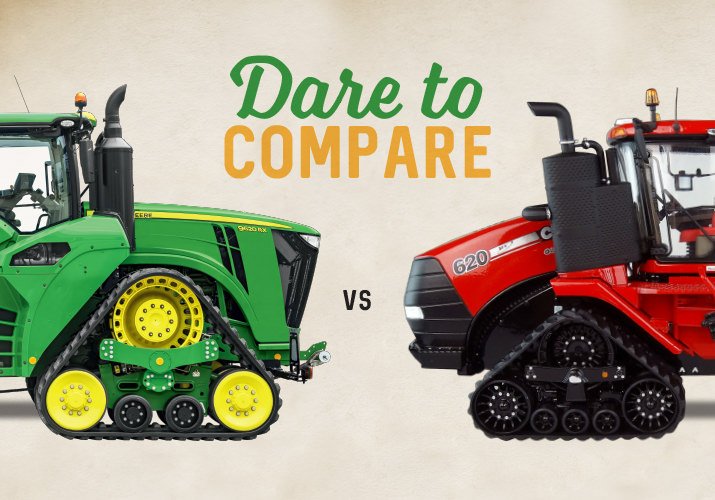John Deere Concaves Vs. Case Ih Concaves: A Comparative Analysis
- - Category: Agriculture
- - 14 Oct, 2024
- - Views: 70
- Save
When it comes to maximizing harvest efficiency and crop quality, the choice of concaves plays a crucial role in the perf
When it comes to maximizing harvest efficiency and crop quality, the choice of concaves plays a crucial role in the performance of combines. Both John Deere and CASE IH offer robust options, each with unique features designed to enhance productivity. This article will delve into the specifics of John Deere and CASE IH concaves, evaluating their design, performance, and suitability for various farming conditions.

Design and Construction
John Deere Concaves
John Deere’s concaves are designed with a focus on adaptability and precision. They typically feature a three-piece design, allowing for easy customization to suit different crops and conditions. The concaves are often made from durable materials that can withstand the rigors of harvesting. The progressive bar spacing allows for optimized threshing as the crop passes through the combine, providing a balance between grain quality and processing efficiency.
One standout feature of John Deere concaves is their ability to be adjusted without removing the entire assembly. This flexibility enables operators to tailor their settings in real time, responding to changes in crop conditions or varieties without interrupting operations. Additionally, John Deere offers a range of concave types, including those designed specifically for small grains, corn, and soybeans, ensuring that farmers have the right tool for the job.
CASE IH Concaves
CASE IH, on the other hand, takes a slightly different approach. Their concaves often utilize a four-piece design that enhances separation and grain handling. This design allows for better adaptability to different crops while also improving grain quality by reducing damage during the threshing process. The heavy-duty construction of CASE IH concaves is also a significant advantage, as they are engineered to endure harsh harvesting conditions.
A notable aspect of CASE IH concaves is the ability to adjust the angle of the concaves, which can be crucial for optimizing performance in varying field conditions. This adjustability allows for fine-tuning during operation, which can lead to better grain recovery and lower loss rates.
Performance
Threshing Efficiency
In terms of threshing efficiency, both John Deere and CASE IH have made significant strides. John Deere concaves are renowned for their progressive design, which effectively separates grain from chaff. According to several independent studies, operators using John Deere concaves have reported improved grain quality and reduced foreign material content in their harvests. The design minimizes kernel damage, which is crucial for maintaining crop value.
Conversely, CASE IH concaves excel in grain separation, particularly in challenging conditions where straw and debris can impede the harvesting process. Their four-piece design has shown to provide a more effective separation, especially in crops with high moisture content or when dealing with heavy residue. Field tests indicate that CASE IH users often experience higher throughput and reduced time spent on adjustments.
Crop Adaptability
Adaptability is another vital factor when comparing these two brands. John Deere's range of concaves is specifically tailored for various crop types, allowing farmers to switch out concaves quickly based on the specific needs of their harvest. This versatility makes them particularly appealing for farms that handle multiple crops throughout the season.
CASE IH also offers a diverse selection of concaves, each engineered to handle specific harvesting challenges. Their design philosophy emphasizes high performance in different crop conditions, particularly in environments where crop density and moisture levels vary significantly.
Maintenance and Cost
Maintenance Requirements
Maintenance is an often-overlooked aspect of concave selection. John Deere’s concaves are designed for ease of maintenance, with accessible parts that facilitate quick inspections and adjustments. This user-friendly design can significantly reduce downtime during the busy harvest season.
In contrast, while CASE IH concaves are also designed for durability, their four-piece configuration may require more intricate maintenance routines. However, the robust build quality means that they may experience less wear over time, potentially leading to lower replacement costs in the long run.
Cost Considerations
Cost is always a critical factor in any agricultural decision. John Deere concaves generally come at a premium price point, reflecting their advanced technology and customization options. However, many operators justify this cost through the increased efficiency and yield quality that these concaves can provide.
CASE IH concaves are typically priced more competitively, which can be appealing for farmers looking to optimize their budgets. While they may not offer the same level of advanced features as John Deere, many users find that the performance and quality still meet or exceed their expectations, making them a cost-effective choice.
Conclusion
In the debate of John Deere concaves versus CASE IH concaves, both options offer distinct advantages that cater to different farming needs. John Deere excels in adaptability, user-friendly maintenance, and advanced threshing efficiency, making it a top choice for farmers focused on precision and crop quality. Conversely, CASE IH concaves shine in separation performance and cost-effectiveness, appealing to those who prioritize productivity in challenging conditions.
Ultimately, the choice between John Deere and CASE IH concaves should be guided by specific operational needs, crop types, and budget constraints. By carefully considering these factors, farmers can select the concave system that best aligns with their goals, ensuring a successful harvest season.
